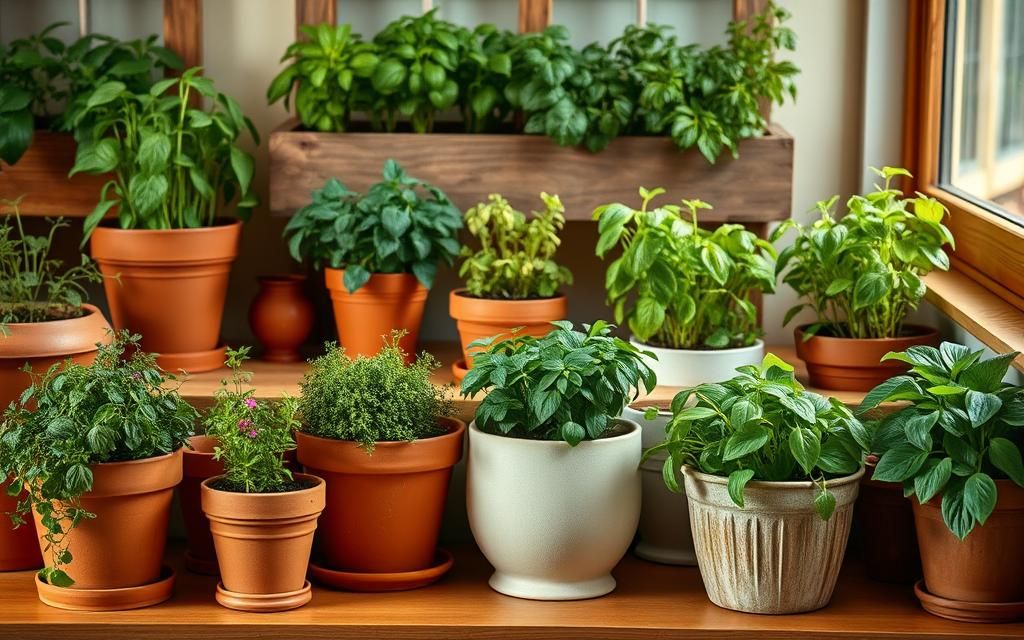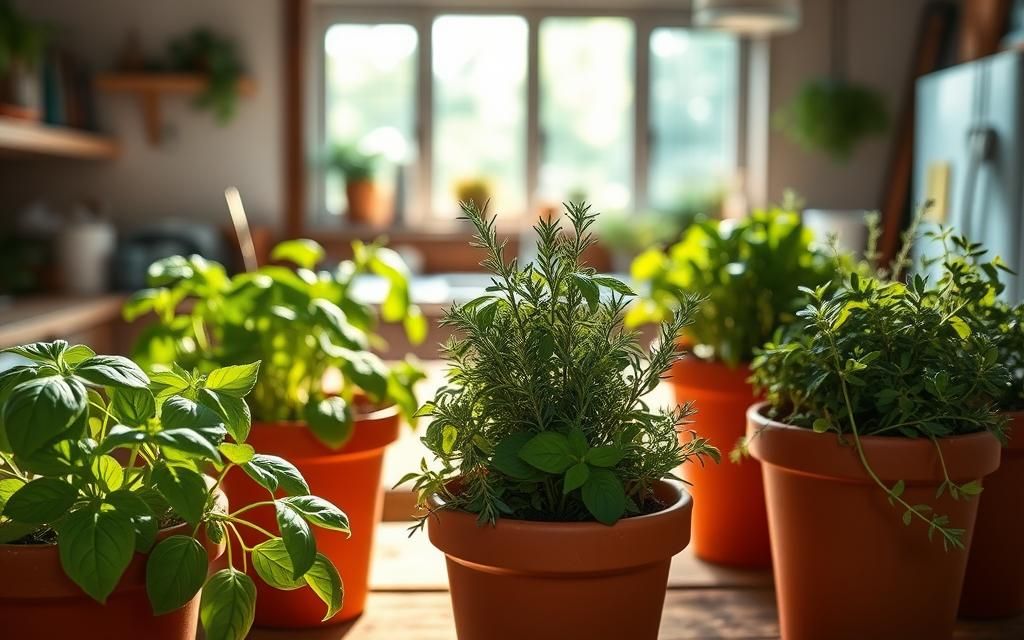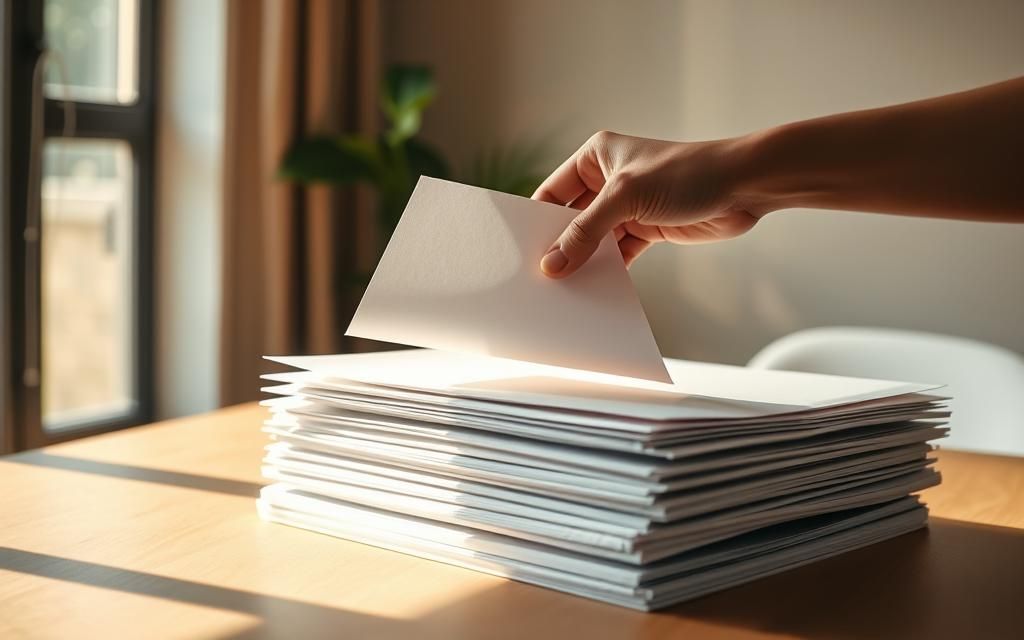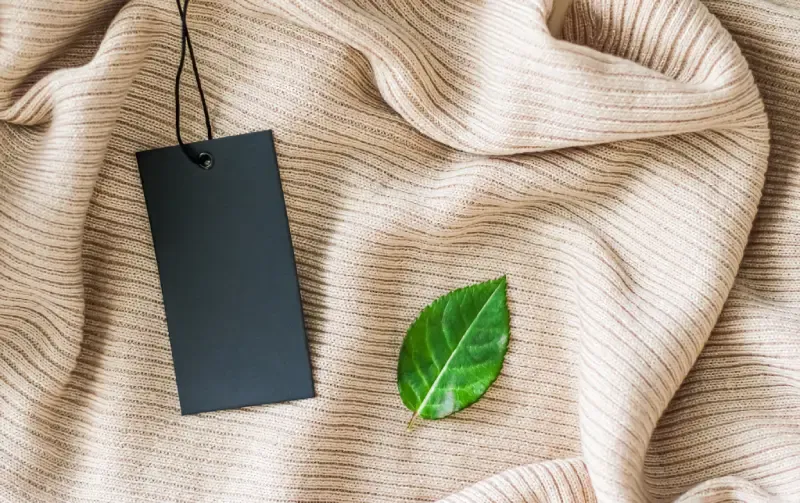Discover how to grow your own herbs indoors with simple tips and tricks for fresh, organic flavors all year round.
Have you ever wondered why fresh herbs taste so much better than store-bought ones? Imagine stepping into your kitchen and picking fragrant basil or mint right from your countertop. It’s easier than you think!
Creating a herb garden at home is a rewarding way to add flavor to your meals. Even with limited space, most plants thrive indoors with proper care. All you need is the right setup and a little patience.
Our guide will walk you through selecting the best containers, soil, and light sources. Whether you’re a beginner or an experienced gardener, we’re here to help. Ready to transform your space into a green oasis?
Table of Contents
ToggleUnderstanding Your Indoor Environment
Creating the perfect environment for your indoor herb garden starts with understanding your space. Light, temperature, and humidity are the three main factors that influence plant health. By assessing these elements, you can set up a thriving garden right in your home.
Assessing Light, Temperature, and Humidity
Natural light is essential for most herbs. South-facing windows provide the brightest exposure, while east and west-facing windows offer moderate light. North-facing windows may require supplemental grow lights for optimal growth.
Temperature and humidity also play a significant role. Most herbs prefer a consistent environment, ideally between 60-70°F. Use a hygrometer to monitor humidity levels, aiming for 40-60% for most plants.
Optimizing Your Space for a Healthy Herb Garden
Choosing the right container is crucial. Ensure your pot has proper drainage to prevent waterlogging. Containers made of terracotta or ceramic are excellent choices for maintaining soil moisture.
If natural light is limited, consider using clip-on LED grow lights. These should remain on for 12-14 hours daily, especially during shorter winter days. Position your plants close to the brightest window to maximize light exposure.
By carefully evaluating your indoor environment, you can create the ideal conditions for a flourishing herb garden. Small adjustments can make a big difference in plant health and growth.
Choosing the Ideal Herbs for Your Indoor Garden
Indoor herb gardens bring fresh flavors and vibrant greenery to your home effortlessly. The key to success lies in selecting the right plants that adapt well to indoor conditions. With proper care, you can enjoy a thriving garden that enhances your meals and brightens your space.

Herbs That Thrive Indoors
Certain herbs are better suited for indoor environments. Basil, mint, and thyme are excellent choices because they adapt well to controlled light and moisture levels. These plants are also forgiving, making them ideal for beginners.
Basil loves bright light and consistent watering. Place it near a sunny window for at least six hours a day. Mint prefers slightly cooler spots and thrives in well-draining soil. Thyme is drought-tolerant and requires less frequent watering, making it low-maintenance.
Benefits of Popular Choices like Basil, Mint, and Thyme
Each herb offers unique benefits. Basil adds a fresh, aromatic flavor to dishes like pasta and salads. Mint is perfect for teas and desserts, while thyme enhances soups and roasted meats. Beyond flavor, these herbs also purify the air and add a touch of nature to your home.
Proper care ensures robust growth. Use containers with adequate drainage to prevent waterlogging. Rotate plants near the window to ensure even light exposure. With a little attention, your indoor garden will flourish day after day.
How to Grow Your Own Herbs Indoors
The journey to a thriving herb garden starts with selecting the best planting method. Whether you choose seeds, seedlings, or cuttings, each approach has its unique benefits and challenges. Understanding these options will help you make the right choice for your indoor space.
Selecting Between Seeds, Seedlings, and Cuttings
Starting with seeds is a cost-effective option, but it requires patience. Basil and thyme, for example, take several weeks to germinate and grow. However, this method allows you to control the plant’s growth from the very beginning.
Seedlings, purchased from a garden shop, are ideal for beginners. They save time and provide a head start. Oregano and thyme seedlings adapt quickly to indoor conditions, making them a hassle-free choice.
Cuttings are another great option. Propagating herbs like basil and oregano from cuttings ensures healthy root development. Place the cuttings in water for a few hours before transferring them to soil. This method is efficient and yields robust plants.
Each method has its pros and cons. Seeds are affordable but time-consuming. Seedlings are faster but slightly more expensive. Cuttings are efficient but require careful handling. Choose the method that aligns with your schedule and experience level.
Properly managing time and temperature is crucial for healthy root growth. Keep your plants in a warm, well-lit area for at least six hours daily. Consistent care ensures vigorous development.
Experimenting with different methods can be rewarding. Try growing basil from seeds and oregano from cuttings to see what works best. Maintain a consistent schedule to ensure your herbs thrive.
With the right approach, your indoor garden will flourish. Whether you choose basil, thyme, or oregano, each plant will bring fresh flavors and greenery to your home. Happy planting!
Best Practices for Potting and Container Selection
The foundation of a thriving indoor garden lies in thoughtful container selection. The right pots not only enhance your space but also ensure your herbs stay healthy and vibrant. Let’s explore how to choose the best containers and creative potting ideas to elevate your gardening experience.

Choosing Containers with Proper Drainage
Proper drainage is essential for preventing waterlogged soil and root rot. Containers with drainage holes allow excess water to escape, ensuring your herbs receive the right amount of moisture. Terra-cotta pots are a popular choice because they absorb excess moisture, while plastic containers retain water longer.
Use saucers under your pots to catch drained water and protect surfaces. This simple tip keeps your indoor herb garden tidy and prevents overwatering. Remember, healthy roots need proper air circulation, which starts with the right container.
Creative Potting Ideas and Saucer Use
Get creative with your potting choices to add personality to your indoor herb garden. Mason jars with a pebble layer at the bottom can serve as unique containers. The pebbles act as a drainage layer, preventing water from pooling at the roots.
Consider repurposing old mugs or teacups for smaller herbs like thyme or oregano. Just drill a small hole in the bottom for drainage. These creative ideas not only save money but also make your garden visually appealing.
Thoughtful container selection sets the stage for a flourishing indoor herb garden. With the right pots and a little creativity, you’ll enjoy fresh herbs and a green oasis in your home.
Mastering Light: Natural Sunlight and Grow Lights
Light is the lifeblood of any indoor garden, and mastering it can make all the difference. Whether you’re growing basil, mint, or thyme, the right light ensures healthy growth from seed to mature plant. Let’s explore how to maximize both natural and artificial light for a thriving herb garden.
Maximizing Sunlight with South- or West-Facing Windows
Natural sunlight is the best source of energy for your herbs. South- or west-facing windows provide the brightest exposure, ideal for most plants. Position your herbs close to these windows to ensure they receive at least six hours of light daily.
If your space lacks natural light, consider using reflective surfaces like mirrors to amplify sunlight. This simple trick can make a big difference in plant health.
Using LED Grow Lights During Shorter Days
During winter or in darker spaces, LED grow lights are a game-changer. These lights mimic natural sunlight and provide the energy your herbs need to thrive. Keep them on for 12-14 hours daily to support steady growth.
Clip-on LED lights are a great option for small spaces. They’re adjustable and can be positioned close to your plants for maximum efficiency.
Strategies for Rotating Plants for Even Exposure
Rotating your herbs ensures every side receives equal light, promoting even growth. Turn your pots a quarter turn every few days to prevent lopsided plants.
Here are some tips to make the most of your space:
- Use tiered shelves to arrange herbs at different heights.
- Group plants with similar light needs together.
- Monitor soil moisture regularly, as light affects water absorption.
With these strategies, your indoor garden will flourish, bringing fresh flavors and greenery to your home.
Watering, Fertilizing, and Standard Maintenance Techniques
Keeping your indoor herb garden healthy requires a balance of watering, fertilizing, and regular care. Proper maintenance ensures your plants thrive and continue to add fresh flavors to your meals. Let’s dive into the essentials of caring for your herbs indoors.
Establishing a Consistent Watering Routine
Watering is one of the most critical aspects of growing herbs indoors. Overwatering can lead to root rot, while underwatering can cause your plants to dry out. The key is to keep the soil moist but not waterlogged.
Check soil moisture by inserting your finger about an inch deep. If it feels dry, it’s time to water. For best results, use pots with drainage holes to allow excess water to escape. This prevents water from pooling at the roots and keeps your herb plants healthy.
Fertilizing for Optimal Growth
Herbs need nutrients to grow, especially during their active growth periods. Use an all-purpose plant food or liquid fish emulsion to provide essential nutrients. Apply fertilizer every 4-6 weeks, following the instructions on the label to avoid fertilizer burn.
Remember, less is more when it comes to fertilizing. Over-fertilizing can harm your plants, so stick to a balanced schedule. This ensures your herbs receive the nutrients they need without overwhelming them.
Seasonal Adjustments and Maintenance Tips
Indoor conditions can change with the seasons, so adjust your watering and fertilizing routines accordingly. During winter, herbs may need less water due to lower evaporation rates. In summer, they may require more frequent watering.
Rotate your plants regularly to ensure even light exposure. This promotes balanced growth and prevents lopsided plants. With consistent care, your indoor herb garden will flourish year-round.
Seasonal Adjustments and Troubleshooting Tips
Seasonal shifts can impact your indoor herb garden, but with the right adjustments, it can thrive year-round. Winter, in particular, brings challenges like reduced sunlight and lower humidity. By understanding these changes and addressing common issues, you can keep your herbs healthy and productive.
Troubleshooting Common Indoor Herb Issues
Leggy growth is a common problem caused by insufficient light. If your herbs appear stretched or weak, move them closer to a sunny window or use LED grow lights. Wilted leaves often indicate overwatering or poor drainage. Check the soil moisture and ensure your pots have proper drainage holes.
Nutrient deficiencies can also affect how herbs grow. Yellowing leaves may signal a lack of essential nutrients. Use a balanced fertilizer every 4-6 weeks to keep your plants nourished. Parsley, for example, is particularly sensitive to changes in light and moisture.
Increasing humidity near the kitchen sink or using pebble trays can improve air moisture levels. This is especially helpful during winter when indoor air tends to be drier. These small adjustments can make a big difference in plant health.
When to Transplant and Repot Your Herbs
Roots emerging from drainage holes or slowed growth are signs it’s time to repot. Choose a container that’s slightly larger than the current one to give your herbs room to grow. Ensure the new pot has proper drainage to prevent waterlogging.
Transplanting is best done during the active growing season, typically in spring or early summer. Gently loosen the roots and place the plant in fresh, well-draining soil. Water thoroughly after repotting to help the roots settle.
With these tips, you can handle seasonal challenges with confidence. Your indoor herb garden will continue to thrive, providing fresh flavors and greenery all year long.
Conclusion
Cultivating a thriving indoor garden is a rewarding journey that brings both beauty and flavor to your home. By focusing on light, moisture, and proper potting techniques, you can create a space where herbs flourish. Every step, from selecting seeds to troubleshooting issues, contributes to your success as a gardener.
Enjoy the process of growing fresh herbs. They not only enhance your dishes but also add a touch of greenery to your living spaces. We hope this guide has provided valuable insights and inspired you to start your own garden.
Feel free to share your experiences and questions with us. Together, we can build a community of passionate gardeners who love bringing fresh flavor into their homes. Happy planting!
Ready to start your indoor herb garden? Visit ecowarriornation.com for expert tips and sustainable gardening ideas!
FAQ
What herbs are best for growing indoors?
Basil, mint, thyme, oregano, and parsley are excellent choices. These herbs thrive in containers and adapt well to indoor conditions.
How much light do indoor herbs need?
Most herbs require 6-8 hours of sunlight daily. Place them near a south- or west-facing window, or use LED grow lights for consistent exposure.
Can I start herbs from seeds indoors?
Absolutely! Starting from seeds is cost-effective and rewarding. Ensure proper soil moisture and warmth for successful germination.
What type of container should I use for my herbs?
Choose pots with drainage holes to prevent waterlogging. Ceramic, plastic, or even repurposed containers work well, as long as they allow excess water to escape.
How often should I water my indoor herbs?
Water when the top inch of soil feels dry. Overwatering can lead to root rot, so ensure proper drainage and avoid letting herbs sit in standing water.
Do indoor herbs need fertilizer?
Yes, but sparingly. Use a balanced liquid fertilizer every 4-6 weeks during the growing season to maintain healthy growth and flavor.
What should I do if my herbs are leggy or yellowing?
Leggy growth often indicates insufficient light. Move them to a brighter spot or use grow lights. Yellowing leaves may signal overwatering or nutrient deficiency.
Can I grow herbs indoors year-round?
Yes! With proper care, herbs can thrive indoors throughout the year. Adjust watering and lighting as seasons change to keep them healthy.
How do I prevent pests in my indoor herb garden?
Regularly inspect leaves for pests like aphids or spider mites. Use insecticidal soap or neem oil to treat infestations and maintain good air circulation.
When should I repot my herbs?
Repot when roots outgrow the container or soil becomes compacted. Spring is the ideal time for repotting to encourage vigorous growth.















